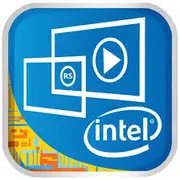Intel Core M-5Y10a

インテル Core M-5Y10a:コンパクトデバイス向けのウルトラモバイルプロセッサ。2025年レビュー
はじめに
2014年から2015年にかけて発売されたインテル Core M-5Y10aプロセッサは、ウルトラブックとコンパクトデバイスの分野での革命の一部となりました。10年が経過した今でも、エネルギー効率と基本的なタスクに対する十分なパフォーマンスのバランスの良い例として残っています。このチップが2025年にどのような relevancy を持ち、誰に適しているのかを考察します。
1. アーキテクチャとプロセス:Broadwellの詳細
Core M-5Y10aは、14nmプロセスで製造されたBroadwell世代(第5世代インテルCore)に属します。これは22nmのHaswellからの移行の最初のステップであり、パフォーマンスを損なうことなくエネルギー消費を削減することを可能にしました。
主な仕様:
- コアとスレッド: 2コア、4スレッド(ハイパースレッディング)。
- クロック周波数: ベースは0.8GHz、Turbo Boostで最大2GHz。
- グラフィックス: インテルHDグラフィックス5300(24EU、周波数最大800MHz)。
- キャッシュ: 4MBのL3。
アーキテクチャの特徴:
- Broadwellマイクロアーキテクチャ: Haswellに比べて5〜10%のIPC(クロックあたりの命令数)の改善。
- HD 5300グラフィックアクセラレーター: DirectX 11.2のサポート、DisplayPort経由の4K出力、H.265のハードウェアデコーディング。
- パッシブ冷却: TDPが4.5Wのため、ファンレスデバイスでもよく使用されます。
2. TDP 4.5W:エネルギー効率が優先
TDP(熱設計電力)4.5Wは、Core M-5Y10aの重要な特徴です。比較のために:
- インテルUシリーズプロセッサ(例:Core i5-5200U)のTDPは15Wです。
- 最新のインテルAlder Lake-U(2023-2025)は9〜15Wです。
これにより得られるものは?
- 静音性: 冷却ファンがないため、音が少なく、筐体の厚さも軽減されます。
- 熱安定性: 負荷がかかっても温度は60〜70°Cを超えることはほとんどありません。
- 柔軟性: メーカーは10mm未満の厚さのデバイスを開発できます。
3. パフォーマンス:実際のシナリオ
オフィス作業:
- 文書作成、ブラウザ(10以上のタブ)、Zoom — プロセッサは処理しますが、積極的なマルチタスクを行うと遅延が発生することがあります。
マルチメディア:
- 4K@30fps(H.265)の視聴 — iGPUのデコーダのおかげで問題なく再生可能。
- 動画編集:1080pのシンプルなプロジェクトのみ(例:Shotcut)。4Kのレンダリングには数時間かかります。
ゲーム:
- CS:GO — 720pの低設定で25〜35FPS。
- Minecraft — 30〜40FPS(シェーダーなし)。
- 最新のゲーム(2023-2025):推奨されません。
ターボブースト:
最大周波数2GHzは10〜20秒間有効になり、その後はTDPの制限により1.2〜1.5GHzに低下します。短時間のタスク(アプリの起動など)には有効ですが、長時間の負荷には不向きです。
4. 使用シナリオ:どのような人に向いていますか?
- 学生: 文書作成、オンラインコース、軽いプレゼンテーション。
- オフィスの従業員: メール、Excel、ブラウザ。
- 旅行者: コンパクトな2-in-1デバイス(例:Lenovo Yoga 3 Pro)で、バッテリー駆動時間7〜9時間。
- 家庭用メディアセンター: HDMIを通じてTVに接続してストリーミング。
向かない:
- ゲーマー、エンジニア(CAD)、ビデオ編集者。
5. バッテリー持続時間:TDPがバッテリーに与える影響
Core M-5Y10aを搭載したノートパソコンは30〜40Whのバッテリーを装備しており、次のような性能を提供していました:
- 文書作成時は8〜10時間(輝度50%)。
- 動画視聴時は5〜6時間。
省エネルギー技術:
- インテルSpeedStep: 周波数の動的変更。
- Cステート: 使用されていないコンポーネントの無効化。
- パネルセルフリフレッシュ: スタティックな画像の際のGPUへの負荷を軽減。
6. 競合との比較
AMD 2015年版:
- A6-8500P(15W、2コア):パフォーマンスは上ですが、TDPは15Wでバッテリー持続時間は少なくなります。
Apple:
- MacBook 12" 2015(Core M-5Y51):同等の5Y10aですが、macOSの最適化により+1〜2時間の駆動時間を得ていました。
インテル2025年版:
- インテル Core Ultra 5 134U(10W、2P+8Eコア):同等のTDPで3〜4倍のパフォーマンス。
結論: Core M-5Y10aは、現代のARMチップ(Apple M3、Snapdragon X Elite)やインテルのハイブリッドプロセッサに対してさえ、基本的なタスクでさえ時代遅れになっています。
7. 長所と短所
強み:
- 極端に低い熱発生。
- 4K出力とH.265のサポート。
- Windows 10/11およびLinuxとの互換性。
弱み:
- マルチタスク時のパフォーマンスが低い。
- 長時間の負荷時にターボモードが非効率。
- 時代遅れのプラットフォーム:DDR3L、PCIe 2.0。
8. 2025年のノートパソコン選びの推奨
2025年のCore M-5Y10a搭載デバイス:
中古市場でのみ見つかります(価格:$150〜250)。新しい類似品は、インテルNシリーズを搭載したノートパソコン(例:Acer Swift 1、$400〜500)です。
注目すべきポイント:
- デバイスタイプ: ウルトラブックまたはトランスフォーマー(例:ASUS ZenBook Flip)。
- ディスプレイ: 解像度はフルHD以上のIPSパネル。
- ストレージ: SSD必須(256GB以上)。
- ポート: 充電に対応したUSB-C。
アドバイス: 予算が$600未満の場合は、インテルCore i3-N305(8コア、15W)またはAMD Ryzen 3 7320Uを搭載したノートパソコンを選ぶことをお勧めします。
9. 最終的な結論
2025年のCore M-5Y10aは:
- 誰に向いているか: テキスト作業とインターネット利用のために安価なノートパソコンを必要とするユーザー。
- 代替品: 中古のMacBook Air M1($300〜400)または新しい予算型Chromebook。
- 主な利点: 静音性、コンパクトさ、基本的なタスクに対する十分なパフォーマンス。
結論: $200以上の支出を考えていない場合、「予備」として使用できるCore M-5Y10aはまだ役立つ可能性があります。しかし、2025年に快適に作業するためには、より最新のソリューションを検討したほうが良いでしょう。
基本
CPUの仕様
メモリ仕様
GPUの仕様
その他
ベンチマーク
他のCPUとの比較
ソーシャルメディアで共有する
または当サイトへのリンクを追加
<a href="https://cputronic.com/ja/cpu/intel-core-m-5y10a" target="_blank">Intel Core M-5Y10a</a>